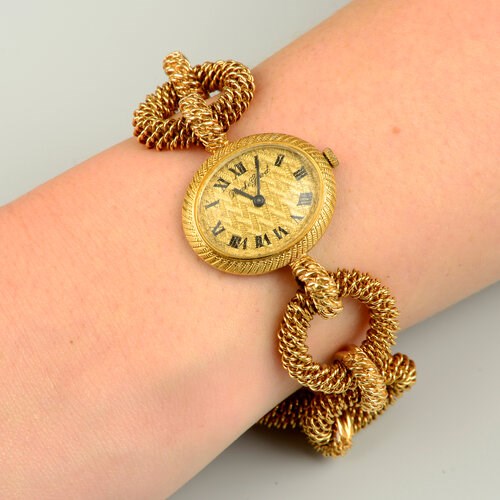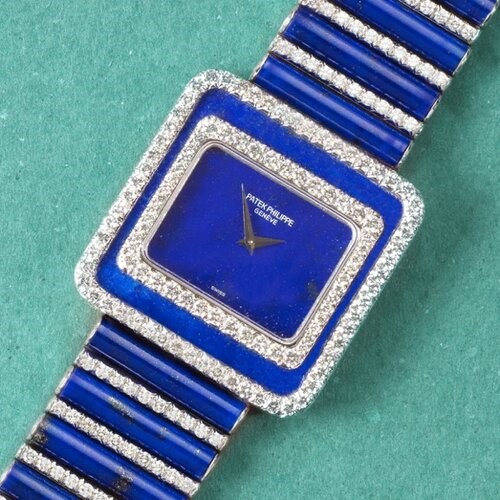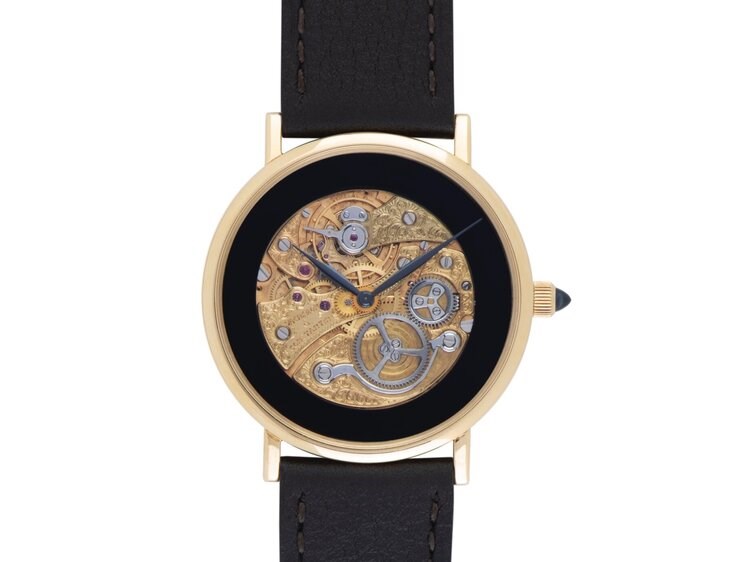Watch This Space
25 March 2021
ShareThe world of women’s vintage watches.
Avril Groom
Avril Groom writes on jewellery, watches and fashion for Telegraph Time, Times Luxx, FT How to Spend It magazine, Centurion magazine and Country and Town House magazine, among others.
_T638203590980922218.png)
18-carat gold Omega Constellation watch, mesh bracelet, automatic movement, circa 1980, sold for £3000 at xupes.com
Image courtesy of Xupes.
Staggering auction prices for watches make regular headlines. Out in front is 2020’s £24.2 million for a Patek Philippe Grandmaster Chime with twenty complications, donated by the brand to a charity auction. Before, the $17.8 million Rolex Daytona exotic dial “Paul Newman” that belonged to the Hollywood icon himself held the crown. These two brands compose all top ten prices, all men’s watches, as are most of the hundred-plus timepieces sold for over $1.5 million.
Buying vintage watches is traditionally a game for the boys - they’re one accessory where men can express individuality and status. But times change. Today’s high-earning women are interested in buying watches and in the art and craft of their movements and dials. With good reason, for women’s vintage watches are great value.
Styles such as Art Deco diamond bracelet watches from establishment brands like Cartier or Van Cleef and Arpels always carry a premium though nothing like the record-breakers. Many women’s vintage models are too small for modern tastes unless you want a delicately worked jewelled evening watch, often a bargain even when sparkling with tiny diamonds right round the case. “Watch sizes today have increased for both sexes”, says Megan Young, head of service at online luxury vintage retailer Xupes and a trained watchmaker. “Women are going for mid-century pieces, for their design and craft and because some were a little bigger than previously. Also the classic men’s watches of that time are relatively small, so they suit women and may not attract the same competition that larger men’s models would.”

18-carat textured gold, manual wind, 1970s bracelet watch by Bueche Girod, sold for just over £2800 at Fellows Auctioneers.
Image courtesy of Fellows Auctioneers.
Millennials love mid-century design, watches included. “The 1960s and 1970s were adventurous, with coloured hardstones and engraved or woven yellow gold and design that seems more individual than much today’”, says Penelope Morris, senior watch specialist at Bonhams. “There is great interest in pieces from Piaget (from about £4000), Chopard (from about £2000) and Cartier.” Designers experimented with brilliant colour, mixing hardstones like turquoise, lapis lazuli, coral, tiger eye or opal, with diamonds for sparkle, set against yellow gold which was the favoured precious metal of the day and worked with imaginative finishes - engraved, woven or mesh - that were inherited from the great Italian goldsmiths and adopted enthusiastically by houses like Piaget, one of the first watch marques to have its own goldsmiths’ atelier. All these elements were housed in cases of unconventional, sometimes abstract shape, the whole item including the bracelet designed as a piece of fine jewellery. The uniqueness and sustainability of vintage resonates with today’s mindful customer, says Natasha Davis, Fellows Auctioneers’ watch specialist. “Many 1960s and 1970s watches are boldly designed and beautifully handcrafted, with outstanding goldsmithing that would be very costly now. They are fine jewellery as much as timepieces yet many are modestly priced”.”
Morris agrees that women are now more knowledgeable about techniques and movements and “know the right questions to ask of any retailer to ensure they get value”. Young says some are now competing with men as collectors, buying as much to invest as to enjoy. “Specific brands and models are collectable, and some appeal equally to women”, she says.

18-carat white gold, diamond and lapis lazuli, manual wind bracelet watch, circa 1976, by Patek Philippe. Sold for £36,875 inc. premium at Bonhams in December 2018.
Image courtesy of Bonhams.

18-carat gold plait-effect bracelet watch with Jaeger Lecoultre 101 movement and ruby cabochons, Jaeger for Hermès, sold for £10,000 at xupes.com.
Image courtesy of Xupes.
One is that Rolex Daytona Paul Newman with its bold, monochrome, panda-style dial - or the reverse - which was, says Young, “not a success when it launched because the colours limited its appeal and not many were made but it became a cult once Newman wore it, and its design and moderate size make it attractive to women wanting that cool, sporty, mid-century style with such cultural symbolism”. A female client bought one over twenty years ago for what seemed a fortune but was several times less than the almost £240,000 that it is currently on sale for. Equally unisex is the Cartier Crash, especially those made in London where the design originated in 1967, and would cost from £60,000 to £110,000 depending on condition. Women’s 1940s models with Jaeger Lecoultre’s 101 movement - the world’s smallest mechanical - have been rising rapidly since the brand revived it three years ago.
Other examples are more modest. Elegant, timeless classics like the Cartier Tank (up to £10,000) and the Patek Philippe Calatrava (from £5000) are, says Morris, “good buys, always stylish and well made with stable mechanical movements, reliable if properly maintained.” Some are variable - a 1970s, gold Omega Constellation would be about £3000 while one of the unique, innovative, special project models designed for Omega by jeweller Andrew Grima would be nearer £30,000.

18-carat gold and onyx 1980s Structura skeleton watch with sapphire cabochon, at Vacheron Constantin Les Collectionneurs.
Image courtesy of Vacheron Constantin.
In addition to auction houses and specialist retailers, some brands are taking back ownership. Cartier’s Tradition is a selection of interesting bought-back items renovated and resold by the house through their flagships and private exhibitions. Similarly Vacheron Constantin has Les Collectionneurs - watches from the 1910s to about 1970, aimed at collectors through special events in their stores. Both houses select and authenticate pieces with great care, and restore them using period components where possible. These are top-level, guaranteed-origin items and reliable investments. But if you have modest means, a good eye and a trusted if less exalted source, you could take a chance on a quirky piece that you love. You may not make a fortune but given the story of the Paul Newman Daytona you just might.

